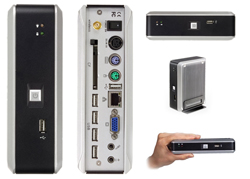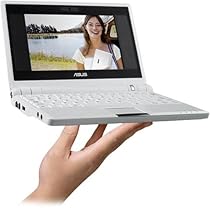We face a monumental challenge if we are to arrest the rise in carbon dioxide levels and stabilize the environment in time to avert catastrophic outcomes. ICT is both part of the problem and can be part of the solution. In presentations by Professor Robin Eckermann, to the ACS earlier in the year, the problems of climate change were outlined and some solutions using broadband were proposed. This talk looks in more detail of the contrbutuion of ICT to carbon emmissions and suggests how new computers and new uses of them can reduce those emmissions
study sponsored by the Australian Computer Society has shown that computers and telecommunications equipment in Australia generated 7.94Mt of carbon dioxide in 2005, 1.52% of national emissions. Some practical steps which can be taken by organisations and individual IT professionals will be discussed, including thin client computers, wireless hand held devices and web application design. It is argued that companies and individual ICT professionals can make a difference in their design and purchasing decisions.
The Australian Government has taken power consumption into account somewhat in the Request for Proposals to Roll-out and Operate a National Broadband Network for Australia. The Department of Broadband, Communications and the Digital Economy has asked for details of power consumption and provisions to maximize power efficiency, including the provision of “sleep mode” for both network and customer terminal equipment. However, there are no energy efficiency requirements set and nor requirement the network be carbon neutral, use renewable energy sources or offset carbon emissions.
Thin Client Linux Computer for Consumers
Zonbu , are offering a thin client Linux computer for $US249.00. They include a data storage service and the application software in the price. If you pay for more online storage on a long term plan the cost of the hardware is lower.
The hardware is a small PC (apparently made by MSTI and sold as the "eBox mini Green PC"):
- 1.2 GHz Via Eden CPU (C7 Esther core)
- VIA CX700M chipset
- 512 MB RAM
- Ethernet 10/100 Mbit/s
- PS/2 keyboard and mouse ports, VGA display port and 6 USB 2.0 ports
- 4 GB CompactFlash local storage
- Graphics up to 2048 x 1536 with 16 million colors – hardware graphics and MPEG2 acceleration
From: Zonbu, Wikipedia, 2007
In effect, the computer is sold in a similar way to a mobile phone plan: the more you pay for the monthly service and the longer you commit to the cheaper the hardware is. The service comes with OpenOffice.com and other typical Linux desktop software. A broadband Internet connection for the unit to be usable. This might be a good option for some home users and micro businesses. The business could simply plug the computer in and use it: if it breaks, then get another one, with the data stored on the remote on the server.
Larger businesses and government agencies could use the same hardware, but supplying their own servers for data and backup. Companies which use electronic document management systems could use those systems to store corporate documents created by the client computers.
Zonbu claim carbon neutral computer:
With Zonbu, green doesn't have to make you blue! With its efficient ultra low power design, Zonbu delivers the power of a traditional desktop computer but uses just a fraction of the energy. That could mean as much as $10 a month in energy savings for you — and might just help save the planet, too. Not only does Zonbu's low power design reduce CO2 emissions, but by buying carbon offsets, we make the operation of your Zonbu device completely carbon neutral. Talk about guilt-free computing!
From: Good things come in small boxes, Zonbu, 2007
Via claim Carbon Free Computing:
VIA Carbon Free Computing addresses this issue head on, aimed at offering the world's first line of PC products certified Carbon Free. VIA works with environmental experts to calculate the electricity used by an average Carbon Free Computing product over its lifetime (assumed to be 3 years). Then from the amount of electricity used, VIA calculates how much carbon dioxide emissions will be released into the environment mainly as a result of fossil fuel burning power plants, and then works with regional offset organizations to "offset" that amount of carbon dioxide through projects such as: * Reforestation ... Alternative Energy ... Energy conservation ...
From: VIA Carbon Free Computing - Breathe Easier!,VIA, 2007
Thin client computers can offer benefits beyond environmental ones. As an example thin clients can replace desktop PCs for those workers only needing standard office applications. The thin client can also replace a digital telephone. Corporate applications, such as payroll and finance can be provided to the desktop using the web browser and interactive web applications, such as AJAX. Corporate documents can be retained in central file servers and Electronic Document Management Systems. This removes the need to maintain as much software on the desktop and increases the security of corporate data.
Servers can be consolidated into efficient and easier to manage data centers. These can take advantage of low power disks, processors and green power.
The ICT Environmental Sustainability Group ("Green ICT") brings together professionals interested in balancing economic and environmental aspects of information technology and telecommunications. It is a special interest group of the Australian Computer Society. The group aims to hold joint meetings with other professional bodies interested in technology, the environment and sustainability.




